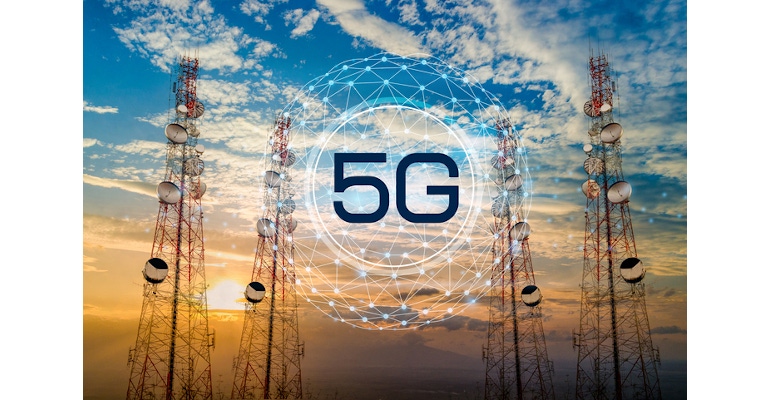How Can Nonterrestrial Network Testing Adapt to a 5G World?
Nonterrestrial networks can expand connectivity to remote locations but require extensive testing to overcome 5G-related obstacles.

Cellular networks are on the verge of significant disruption. 5G is raising speeds and lowering latency worldwide, and now nonterrestrial networks (NTNs) promise to expand connectivity to areas outside cell towers’ reach. Bringing these technologies together is a crucial but potentially challenging step forward.
5G NTNs will vastly expand networks, so designing devices that use them opens the opportunity to capitalize on significant future markets. However, achieving this hyperconnectivity will require extensive testing. Considering the challenges and opportunities in NTN testing for 5G networks is critical to maximizing this opportunity.
The Importance of Nonterrestrial Network Testing
NTNs use satellite connections directly with end devices and with on-the-ground cellular infrastructure. As a result, they can significantly expand coverage areas for high-speed networks, even in locations with no ground infrastructure. Satellite connections are often the only type available in remote areas but may be slow. However, if satellites can bridge the gap between users and 5G networks, they could overcome that barrier.
Those improvements become more valuable as connectivity becomes increasingly central to business and everyday life. NTN-capable devices could expand remote work, ensure rural communities can access vital internet resources, and enable broader, more reliable emergency services. At the same time, NTNs face some considerable challenges.
NTNs introduce a lot of complexity. Signals must reach farther into the atmosphere and deal with a wider range of physical barriers, like mountain ranges, planes, and more. Today’s devices also lack the hardware to connect with distant satellites, so the market needs new ones. Thorough testing—both in simulation and the field—helps providers ensure their NTNs can withstand these obstacles.
How 5G Impacts NTNs
The growing prominence of 5G helps and hinders NTN testing. 5G’s reliance on small cells means you can install ground infrastructure in more places with less disruption. As a result, building larger surface networks to serve as an in-between for devices and satellite connections will be easier than with 4G LTE.
However, 5G does have a range problem. Its fastest wavelengths can only reach around 1,000 feet, and low bandwidth covers a much wider area but at significantly reduced speeds. Consequently, establishing reliable 5G NTNs—which feature highly dispersed infrastructure—may be challenging.
A 5G NTN must also support a wide range of devices. That’s one of the key benefits of 5G, but enabling that through an already large and complex network can introduce many chances for things to go wrong. There’s a lot of noise, delays, dynamic network conditions, and multipath routing to consider.
How to Adapt NTN Testing for 5G Applications
Given these unique considerations, NTN testing must adapt. Here’s how network providers and design engineers can ensure their NTNs are ready for a 5G world.
Start With the Most Critical Areas
Because NTNs are inherently massive and complex, testing every coverage area will be a long, expensive process. You can work around that by testing for the worst possible conditions first. If in-lab and in-the-field tests focus on the areas most likely to experience issues, they can overcome their biggest challenges first, shortening overall timelines.
Urban areas likely don’t require much testing. The U.S. rolled out more than 417,000 5G cell sites in 2020, mostly in more densely populated areas, so there’s sufficient infrastructure in these zones already. Rural locations with less infrastructure and further distances between towers are a bigger challenge, so they should take priority.
These tests will become easier with more NTN-capable devices. Creating more endpoints considering low-infrastructure NTN connections from the beginning will make it easier to adapt these networks to extreme conditions. Rolling out connectivity to currently unconnected areas will be simpler and faster.
Test in Various Conditions
A 5G NTN must also deal with wildly shifting conditions. Consequently, it’s important to simulate and perform field tests in varying environments and situations to ensure the network is reliable in practice.
Network parameters must adjust amid changing conditions to provide a consistent connection. Learning what works best in which situations requires testing, so simulate as many different scenarios as possible. Consider these different parameter needs when designing NTN devices to ensure all system parts can adapt.
Field-test these shifts, but remember you’re trying to prepare for the unpredictable. Simulations are also necessary since you won’t always have that opportunity. It’s vital to keep the last step in mind by testing the most potentially disruptive scenarios before moving on to others.
Automate Tests
These various simulations require extensive tests, but organizations must also streamline NTN testing as much as possible to enable a quicker rollout. Those goals may seem at odds initially, but you can achieve them through automation.
Automated testing systems can simulate various environments and manage real-world tests. You can run these experiments around the clock because you don’t need any employees present. You’ll cover more ground in a shorter period as a result. Electronics developers should keep this streamlining in mind, too. Automation shortens 5G NTN timelines, so it’ll become increasingly important to roll out compatible devices to capitalize on the new market.
Testing automation will also improve your results’ accuracy. Even well-managed, highly experienced workplaces still see error rates of five to 10 mistakes per 100 opportunities. Those seemingly insignificant figures can cause many issues in a high-volume testing environment, but automation can handle this data-heavy work more accurately.

5G NTNs Will Change Telecommunications for the Better
NTNs are the next step in 5G networks. Given how disruptive this shift will likely be, it’s time to start preparing and designing NTN-capable devices today.
Combining these technologies will require challenging tests, but organizations that adapt accordingly can ensure a more reliable 5G NTN rollout. When that happens, telecommunications will become faster and more accessible.
About the Author(s)
You May Also Like





